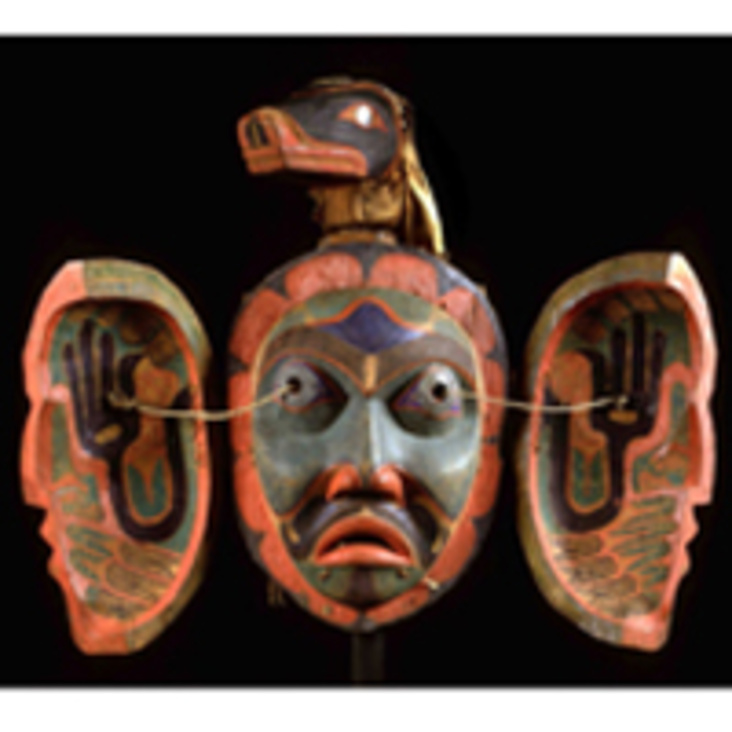











38 West 86th St.
New York, NY 10024
212.501.3000
admissions@bgc.bard.edu
18 West 86th St.
New York, NY 10024
212.501.3023
gallery@bgc.bard.edu
BGC Gallery is currently closed.
38 West 86th St.
New York, NY 10024
212.501.3000
admissions@bgc.bard.edu
18 West 86th St.
New York, NY 10024
212.501.3023
gallery@bgc.bard.edu
BGC Gallery is currently closed.
Franz Boas, George Hunt and the Making of Anthropology
February 15, 2019
1:30 – 5:30 pm

This symposium marks the opening of The Story Box, a BGC Focus Exhibition that examines the hidden histories and complex legacies
of one of the most influential books in the field of anthropology: Franz
Boas’s The Social Organization and the Secret Societies of the Kwakiutl
Indians (1897). The collaborative product of Boas’s own observations and
extensive materials authored by his long-time Indigenous co-worker George Hunt,
the text was the first systematic attempt to document all sociocultural,
spiritual, and aesthetic aspects of a spectacular Native North American
ceremonial structure. A pioneering achievement on many levels—not least in its
use of “new” media for ethnographic representation—it was the immediate
inspiration for subsequent books, images, and museum displays, and has been the
subject of an ever-lengthening list of secondary literature.
Yet few readers realize the conditions under which the book was produced, which include the scramble for Northwest Coast collections, the Canadian prohibition of the potlatch, and the participation of Kwakwa̱ka̱’wakw in the 1893 World’s Columbian Exposition. This exhibit and symposium contribute to a collaborative project to reassemble globally distributed collections and fragmented archives, illuminate the book’s history, and return long-dormant knowledge to the Indigenous families whose patrimony is represented in it. Speakers include project team members who will discuss the primary media utilized by Boas and Hunt (museum objects, texts, photographs, and wax cylinder recordings), the main sites for their ethnographic recording (fieldwork in British Columbia, the Chicago World’s Fair, and museums in North America and Europe), and the legacy of the book in Kwakwa̱ka̱’wakw communities.
Peter Miller
Bard Graduate Center
Welcome
Aaron Glass
Bard Graduate
Center
Introduction
Judith Berman
University of Victoria
George
Hunt, the Chicago World’s Fair Troupe, and the Hidden Sources of Social Organization
Aaron Glass
Bard Graduate Center
Museum
Collections and Boas’s Anthropology of Art
Ira Jacknis
Phoebe A. Hearst Museum of Anthropology, University of
California, Berkeley
Picture
Worlds: Franz Boas and the Creation of Illustrated Ethnography
Rainer Hatoum
Goethe University
Making
Sense of the Dispersed: Boas’s Kwakwa̱ka̱’wakw “Field” Notes and Music Records
Andy
Everson
Artist and Community Researcher, Comox, BC
A
Book of Treasures: Utilizing Hunt-Boas Texts in the Contemporary
Kwakwa̱ka̱’wakw Potlatch
Corrine Hunt
Designer-Komoyue, Fort Rupert,
BC
What
Makes “Indians” So Interesting to “White” People?
Barbara Kirshenblatt-Gimblett
POLIN
Museum of the History of Polish Jews
Keynote Discussant
Panel Discussion




38 West 86th St.
New York, NY 10024
212.501.3000
admissions@bgc.bard.edu
18 West 86th St.
New York, NY 10024
212.501.3023
gallery@bgc.bard.edu
BGC Gallery is currently closed.
